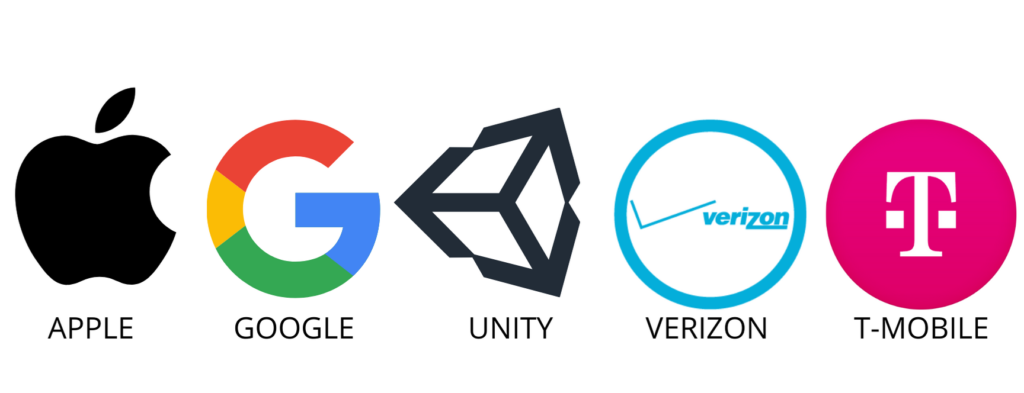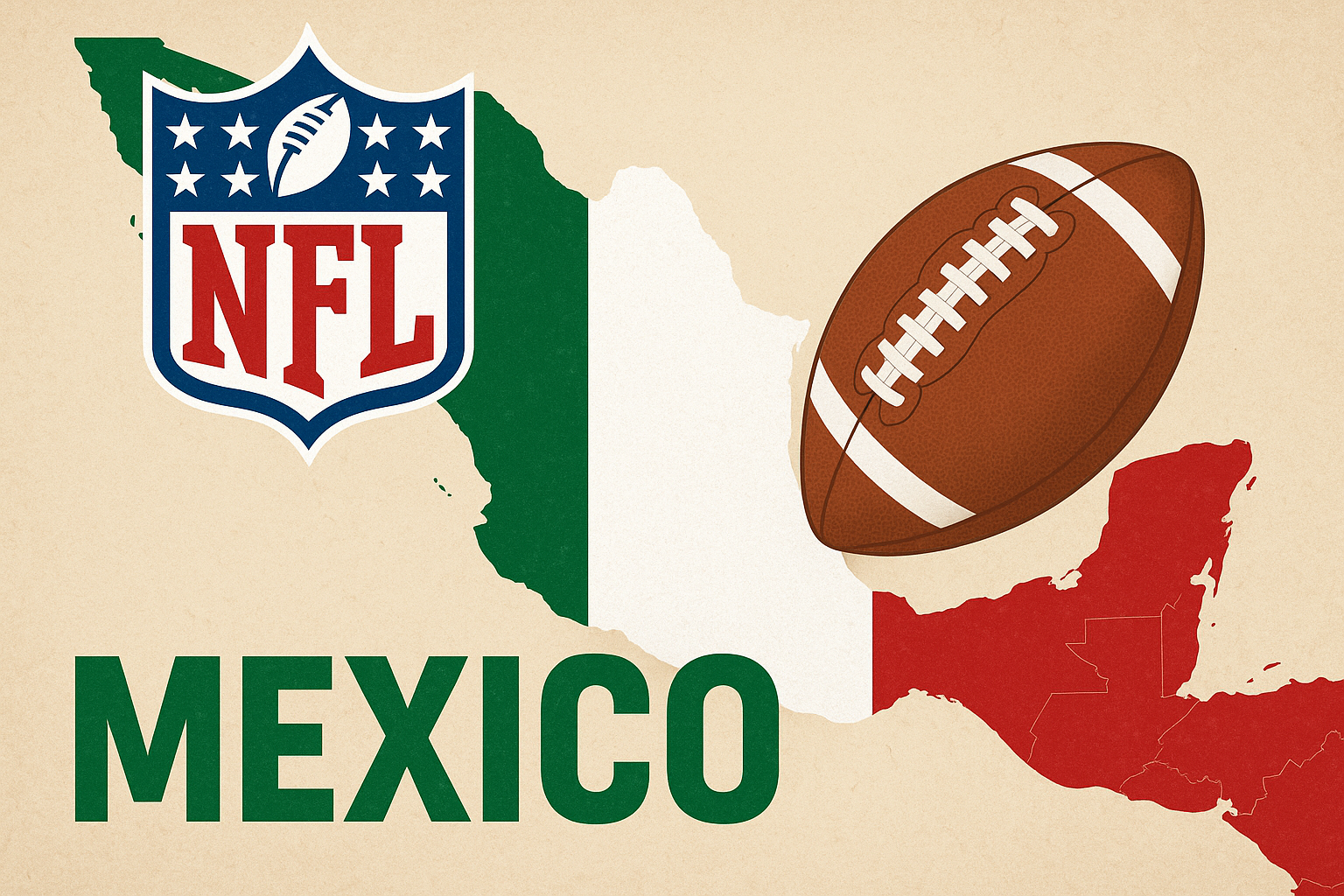THE FUTURE OF SPORTS INNOVATION IS IN OUR HANDS
The future is extremely important in the sports industry, as new reports about the prospects for the future of sport appear in front of us every week. Due to the anticipated competitive nature of the industry, knowledge of new technology or advantage is extremely necessary. The Sports Innovation Lab has developed a study like no other to analyse the data on global technological developments, both in the past and present day. With the aim to offer a concentrated view of what is to come.
This study focuses on smartphone innovation, as it is the technology of our present and future. The combination of a camera, a touchscreen and a network capability continues to make a smartphone an incredibly effective tool. We need to unlock the full potential of this device. Smartphones are capable of getting fans together in the stadium and at home. Technical innovation is not linear, Sports Innovation highlights that smartphones will continue to be a key component of sports innovation in many years to come.
THE FLUID FAN
The “Fluid Fan” was discovered by Sports Innovation’s study. This defines a type of sports fan who is flexible, constantly finding new sports and finding different ways to interact with each sport. The rise of fluid fans is due to the evolution of the smartphone. As they have all the means for multitasking and a continuous operation for the sporting community. It’s been said countless times before, but having a smartphone means the world is at our fingertips.
Smartphones are a great example of convergence, adding radio, television, and games to one device. A smartphone is a solution to the problem of distance between users. It helps people from all over the world to interact with each other, whether they’re at a game, watching from home, or even when they’re on the road. The act of creativity in sport is constantly in motion, but there are specific events in the calendar where the sporting sector really shines.
MEGA-EVENTS
The FIFA World Cup, the Olympic Games and the Super Bowl are all big sporting events that create global interest. They merit their own category because of their originality relative to other sporting events. That’s why they’re known as mega-events. The Sports Innovation Lab sheds some light on the fact that the FIFA World Cup 2026 will find smartphones at the core of their ideas for innovation.
Smartphones will remain the main outlet for the distant future of the FIFA World Cup. This study has highlighted what to look for from the perspective of a smartphone fan at the next FIFA World Cup activities, for example:
FIFA WORLD CUP QATAR 2022
- The 2022 FIFA World Cup will be the first mega-event to be held in the Middle East. Since it is the most compact edition of the FIFA World Cup, with the longest distance between the stadiums being 75km, the event will provide a range of creative experiences for fans.
FIFA WOMEN’S WORLD CUP AUSTRALIA/NEW ZEALAND 2023
- The FIFA Women`s World Cup 2023 in Australia and New Zealand will be the largest edition in history with 32 teams participating.
FIFA WORLD CUP 2026
- The FIFA World Cup 2026 in Canada, Mexico and the USA will then be the biggest edition ever with 48 nations set to participate in 80 matches.
WHAT SHOULD WE EXPECT FROM SMARTPHONES IN THE FUTURE?
We need to think about these elements as we discuss what innovations will arrive in the run-up to 2026. Constant connectivity is of vital importance in the sports industry. Sports fans are increasingly expecting to participate in their sporting activities through a smartphone. This includes buying tickets, merchandising, watching matches, betting or communicating with other fans. Therefore, current and future technology for sport depend significantly on smartphone technology.
It is important to note that smartphone technology has a wide variety of business stakeholders. Apple continues to be one of the leading providers of smartphone development and chip manufacturing. Organisations such as Google and Cisco are also focusing on cloud technology. The advancement in wireless technology continues to skyrocket, with the development of 5G expected to have a major effect on the North American wireless industry.
WE STILL HAVE A LONG WAY TO CLIMB
The first iPhone was produced in 2007, how was it over a decade ago? The first iPhone may be seen as a relic due to the exponential development in technology. In reality, we’re still in the early stages of global technological advancement. It’s the same with popular laptops and tablets that have similar characteristics to a smartphone and fit in our back pockets.
KEY FACTS
- In Sub-Saharan Africa, the number of people connected through a smartphone will increase from 44% to 65% from 2019 to 2025.
- China is estimated to increase smartphone customers from 53% to 61% by 2023.
- In Latin America, smartphones were responsible for 66% of all mobile connections. This is set to increase by 18% by 2025.
In the last 10 years, the mass production of smartphones has increasingly become standard practice. However, designers and developers have just begun to realise the potential power of these devices. The main features that make up a smartphone are the touchscreen, camera, and constant networking.
These limited features that define a smartphone indicate that there is a large number of opportunities to further improve smartphones. Tools such as AR statistical overlays, interactive video, and enhanced video conferencing. We should have a taste of all this by the FIFA World Cup in 2026.
CO-WATCHING AND INTERACTION
This technology allows fans to behave as a group, regardless of the distance between fans. This is co-watching and is very common in the sports industry. This technology is yet to improve in terms of alignment with live video and social elements.
However, by 2026, it has been predicted that the experience of sports fans will greatly improve. This is due to the high quality of 5G and the bandwidth, with the touchscreen adding to the creative interaction. Allowing fans to play against each other as well as cheering for victory in a new way. Due to its touchscreen, the smartphone is fundamentally interactive. This engagement will be a very important part of how fans at the stadium and at home will exchange pictures, videos and play games.
The evolution and proliferation of smartphones, its capabilities and mobile connectivity are constantly pushing the boundaries of the involvement with the beautiful game, at the stadium, but also from anywhere at any given time in the world.
Based on changing consumption patterns and motivations fans will crave for the next generation of virtually connected, inclusive, immersive and interactive experiences ignited by the power of the collaborative perception of the emotional moments, the tribal affiliation and the cultural significance of the FIFA World Cup™ and its narratives.
Benjamin Stoll Director Of Strategic alliances & Innovation – FIFA
ENTERING THE METAVERSE
The metaverse is a continuous, synchronised and collaborative digital universe. The theory is that this universe never ends, it’s infinite. The users can enter this environment at the same time, in real-time, allowing for a shared experience. The metaverse is collaborative since users feel as they are in this virtual reality. Epic Games Signature Game Fornite is the most common example of a metaverse.
This game may appear as a shooting game at first glance but when engulfed in the game, you start to see that this game has a lot more to offer. Fornite has live concerts, enabling users to enjoy music with other players. As well as live movie screenings, literally watching a screen on their own screen. This metaverse has become one of the number one destinations for a young audience.
DIGITAL COMMUNITIES
There are a variety of digital communities that have come into being without a virtual world like Fornite. For example, EA SPORTS FIFA games. Intensely immersive communities are forming for fans in relation to the game.
These communities are from devoted Youtubers, websites, and apps that share and discuss the many elements of FIFA. The concept of “liveness” and “inclusiveness” is central to their virtual social life. There is no alternative for witnessing the excitement of a game in real-time. It is essential that the sports industry strives hard to capture the interest of even more fans who would like to experience this “liveness” and play in a metaverse.
INNOVATION THAT SPORTS FANS COULD SEE IN THE FUTURE
AUGMENTED REALITY
Augmented Reality is becoming increasingly popular. When used in smartphones it enables fans to connect and participate in a different way. You may have seen AR while using GPS monitoring or presenting game statistics. This technological breakthrough has also enabled fans to enjoy new games. Continued development of 5G would enable AR to create more live experiences for smartphone users.
Companies to look out for:

SOCIAL & CO-WATCHING EXPERIENCES
The social element is important for a fans sporting experience, although it is unlikely that they will be able to attend a live event at this time. However, co-watching sports with a smartphone would be crucial for future events due to existing restrictions. Fans can watch broadcasts and have social opportunities that encourage fans who are at home to engage with others.
Companies to look out for:

SMART STADIUMS
The constant commitment to engaging with our smartphones will not end at sports fans. They expect their stadium experience to improve because of the latest technology. Every part of the stadium experience, including travel and actually watching the game, will be influenced by new ways to engage with smartphones. Sport venue managers will be forced to use all of this innovation in the midst of a pandemic to ensure that fans are safe. The one gadget that every fan has in their pocket, the smartphone, will be at the forefront of this movement.
Companies to look out for:

The Sports Innovation Lab has made it apparent that the future of innovation for the upcoming FIFA World Cup will depend on smartphones. The value of the FIFA World Cup has been combined with the progress of technology companies that set to host. This indicates the amount of creativity and pressure for the FIFA World Cup 2026 to become the most technologically advanced and immersive mega-event to date.
This degree of advancement is unavoidable as technology continues to evolve. This event will involve a range of collaborations and a high degree of coordination to unlock tremendous experiences for fans, teams and organisers.
GET IN TOUCH
To find out more about Samba Digital, get in touch with us via our Contacts Page.
Other News

Samba Digital teams up with SailGP to strengthen its visibility through influence

Iron Heads join forces with Samba Digital to expand their global footprint

THE NBA ACCELERATES IN BRAZIL : A STRATEGIC SHIFT ON AND OFF THE COURT

ABU DHABI X NBA: THE NEW GLOBAL COURT OF BASKETBALL POWER

Lidl France unveils “Your Colors, Your Jersey”: a creative and solidarity-based initiative for handball clubs

